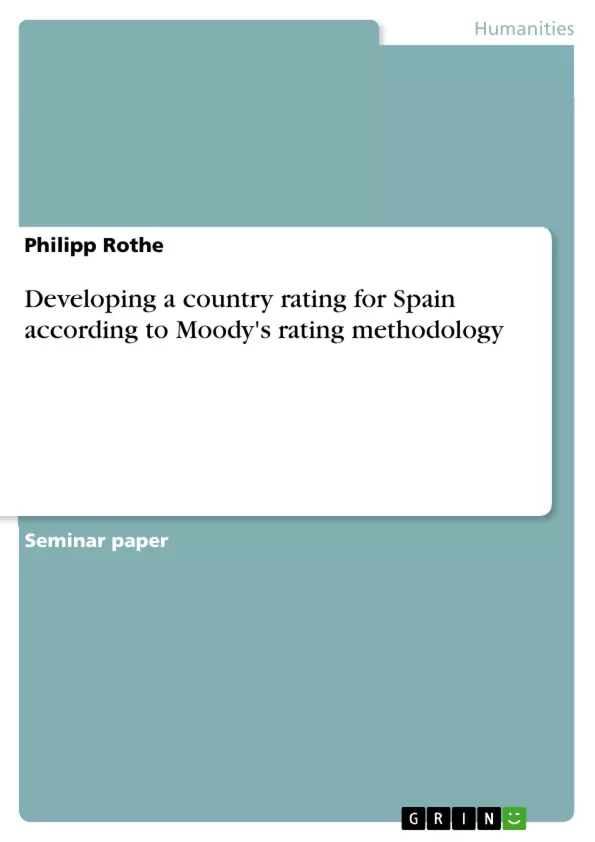Spain is a country in Southwestern Europe, located on the Iberian Peninsula together with Portugal. With an area of 505,990 sq km, it is the fourth-largest democracy in Europe.
The capital and simultaneous the biggest city is Madrid, with almost 3.4 million inhabitants. In addition to the mainland of Spain, several island groups belong to the country. These include but are not limited to the Canary Islands, which are just off the coast of North Africa and about 100 km from Morocco, and the Balearic Islands, near the east coast of Spain's mainland.
Spain has 47.3 million inhabitants, which makes Spain the sixth-biggest country in Europe measured by the population.
Inhaltsverzeichnis (Table of Contents)
- Description of Spain and its economy
- Spain rating according to Moody's
- Description of Moody's rating methodology
- Application of Moody's rating methodology on Spain
- Travel and tourism sector and related risk
- Forecast of international tourists visiting Spain
- Triple exponential smoothing
- ARMA (1,1)
Zielsetzung und Themenschwerpunkte (Objectives and Key Themes)
This document aims to analyze the economic situation of Spain, focusing on the country's macroeconomic performance, its sovereign rating, and the potential impact of tourism on the economy.
- Overview of the Spanish economy, including GDP, trade balance, and major economic sectors
- Evaluation of Spain's sovereign rating by Moody's, considering its methodology and implications
- Exploration of the travel and tourism sector as a key driver of the Spanish economy
- Analysis of forecasting methods for international tourist arrivals in Spain
- Assessment of the economic risks and opportunities associated with the tourism sector
Zusammenfassung der Kapitel (Chapter Summaries)
- Chapter 1 provides an overview of Spain's economy, including its GDP, trade balance, and major economic sectors. It discusses the country's economic performance, highlighting the stagnation of GDP since 2008 and the persistent trade deficit.
- Chapter 2 focuses on Spain's sovereign rating according to Moody's. It introduces Moody's as a rating agency and explains its methodology for assessing a country's creditworthiness. It then applies this methodology to Spain, examining the economic and institutional factors that influence the rating.
- Chapter 3 explores the travel and tourism sector in Spain, highlighting its significance as a major driver of the country's economy. It discusses the tourism industry's contribution to GDP and the number of international tourists visiting Spain annually.
- Chapter 4 delves into the forecasting of international tourist arrivals in Spain, focusing on two methods: triple exponential smoothing and ARMA (1,1). It explains the principles behind these methods and their application to predicting future tourist numbers.
Schlüsselwörter (Keywords)
The key focus areas of this document are the Spanish economy, sovereign rating, tourism, forecasting methods, and economic risk. It examines factors such as GDP, trade balance, Moody's rating methodology, international tourist arrivals, and the potential impact of tourism on Spain's economic performance.
- Quote paper
- Philipp Rothe (Author), 2021, Developing a country rating for Spain according to Moody's rating methodology, Munich, GRIN Verlag, https://www.grin.com/document/1357314



